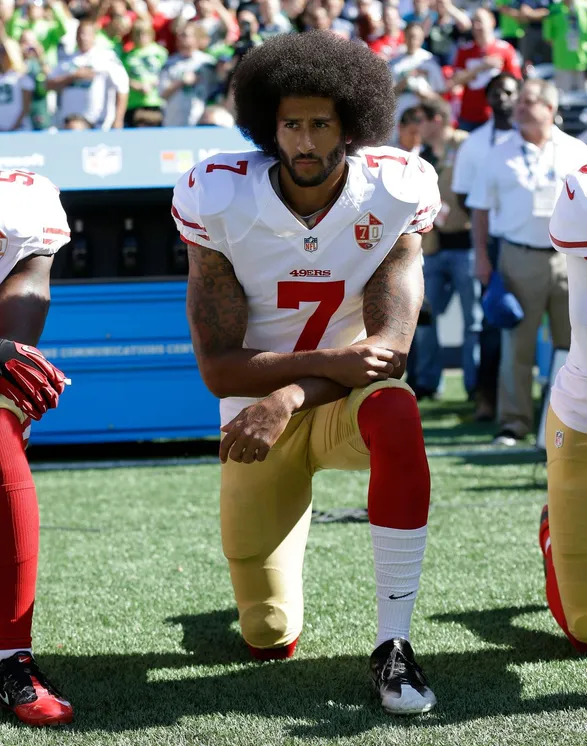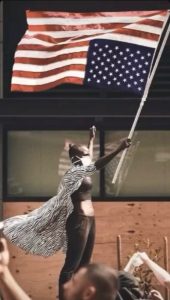1
Section One: The Fundamentals
A) What do we know about sport? What are common assumptions we make about sport and society?
Sport builds character
Sport provides opportunities for social mobility
Sport encourages teamwork and unity
Sport reflects values and social norms
Sport transcends politics
Sport speaks a universal language
Sport is a measure of individual merit
|
Although sport is meant to ‘transcend politics’, in some perspectives of sports (anything past house league in my opinion) will have some sort of politics interwoven within it’s structure. I’m sure many people who grew up playing sports eventually realized it’s not just about how well you play, it’s about who you know. At a young age decisions about team selection, playing time, or opportunities to advance can depend heavily on factors unrelated to skill, such as favoritism, connections, or socio-economic background. As athletes progress to higher levels, the importance of ‘who you know’ often eclipses pure talent. Connections can lead to opportunities that might otherwise be inaccessible, such as scholarships, sponsorships, or professional contracts. While there are stories of athletes who rise purely on skill, they often encounter political realities at some point, requiring them to engage with influential figures or institutions to progress further. I say this knowing I have been on both ends of the scale, I’ve been given opportunities in the sport I played because of coaches who had seen that I was ‘worthy’ or skilled enough to play up, but I wouldn’t have gotten there without them. On the other end, I have also had opportunities taken away from me simply because a mother had been heavily involved in decision making, meaning her daughter would get the spot even if she wasn’t as skilled ( That is simply my opinion, but I can/could admit when someone was better). As I’m writing this I also have to note that this incident was solely political and not merit based because it hadn’t been the first time this woman had done this, she was able to use . It doesn’t change, and parents tend to be the main cause of political strife, they want what’s ‘best’ for their child with no regard for the other children on the team. |
Exercise 3: Notebook prompt
What are some other metanarratives about sport that you are familiar with? Find an image or video clip or draw something yourself that captures this idea…
So what? Why does any of this matter? Does it matter? As something we grow up with – live with – play through – we don’t often interrogate the meanings of sport, and perhaps we don’t want to.
But being aware of these assumptions and metanarratives is especially important, I would argue, because of the centrality of sport to our everyday lives, the role that sport plays in shaping our childhood and worldviews and….. [finish that thought]
|
Another metanarrative is Sport as a Ritual or religion, the idea that sports function as a kind of modern day religion with rituals (during games and ceremonies), sacred spaces (stadiums) and devout followers (fans).
… and the way it reinforces or challenges the stories we tell ourselves about success, identity, and values. For instance, “Pursuit if Excellence” and “Overcoming Adversity” frames athletes as symbols of perseverance and dedication, shaping how we view hard work, not just in sports, but in a broader context. We aspire to be like the athletes we see playing, the ones we idolize, that why inclusion based on gender, race, or ability are so important. It allows us to recognize the narratives of those who are being excluded and begin questioning whose stories are being amplified and whose struggles are being minimized and what values are being upheld.
|
B) What is social justice?
Exercise 4: Padlet Prompt
Think back to the last section and try to look at some of the ideas we discussed differently. How might sport and social justice actually co-exist?
Record any images, video clips, or gifs you added to the padlet and identify a point of intersection between sport and social justice (can be an issue or a barrier or a debate or something you would like to explore in more depth in this course) . Screenshot or paste in your response below.
|
Sports and social justice can coexist through advocacy and activism, athletes use their platforms to highlight systemic injustices and push for change. A powerful example of this intersection is Colin Kaepernick’s protest against police brutality and racial injustice. In 2016, Kaepernick began kneeling during the national anthem as a form of silent protest, sparking both widespread support and intense backlash. His actions ignited global conversations about racism, police violence, and the role of athletes in social movements. Kaepernick’s activism highlighted a major barrier in this intersection: the criticism and consequences athletes face for speaking out. Despite being a highly skilled quarterback, Kaepernick was effectively blacklisted from the NFL, showing how institutions can resist or punish advocacy that challenges the status quo. His protest also raised debates about patriotism, free speech, and whether sports are an appropriate space for activism.
|
C) Social Justice Reading
(note: this activity is optional!)
D) KINESIOLOGY AND SOCIAL JUSTICE
Exercise 5:
Social justice is a difficult concept to identify because of its:
-
conflation with other concerns like multicultural education, critical pedagogy, postmodernism, post colonialism, and queer theory
How does mainstream discourse construct marginalized populations as “being-at-risk” for health and fitness issues?
-
It suggests they lack the capacity for self-compliance in health and physical education.
-
It suggests they lack the capacity for self-management skills.
-
It suggests they lack the capacity for self-discipline.
Fill in the missing words
Healthism constructs members of marginalized populations as deficient , not responsible citizens, and as “problem to be fixed” and blamed when government-mandated programs fail to meet their goals.
Drag the words into the correct boxes
According to the authors of this article, by making health and fitness a matter of personal responsibility, individual choice, and
Exercise 6:
What are the implications of bodies-at-risk discourse and the refusal to understand the health gap from a social justice perspective, according to the authors of this article?
|
The authors argue that the bodies-at-risk discourse, rooted in neoliberalism and healthism, shifts responsibility for health outcomes onto individuals, particularly marginalized groups, rather than addressing systemic inequalities. By framing these groups as non-compliant with dominant health norms, public health initiatives reinforce stereotypes and fail to account for the social determinants of health. This approach perpetuates blame, surveillance, and control, while ignoring the structural barriers these populations face. The refusal to view health disparities through a social justice lens allows systemic inequities, such as racism and socioeconomic exclusion, to persist. In consequence, health programs may exacerbate the marginalization of these groups rather than addressing the root causes of disparities. This limits the effectiveness of public health interventions and widens the health gap.
|
Section Two: Sport Feminism
Exercise 7: Notebook Prompt
What is feminism? What does it mean to you? Choose one of the images below and explain how it captures your understanding of feminism (or find one that does speak to you and paste this into your pressbook with an explanation of why it matters to you.
| Feminism, from my perspective, is about striving for true equality, not just on paper but in everyday life. It’s about giving women a voice—a voice that has often been silenced or overlooked throughout history. Feminism advocates for the recognition that, despite outward progress, women continue to be disregarded in many spheres of life, whether it’s in the workplace, at home, or in the media. It is a call for a world where women are seen as equal, not just in terms of legal rights, but in the way society perceives and treats them. To me, feminism is about challenging the systemic barriers that still exist, fighting for women’s autonomy, and ensuring that every individual, regardless of gender, has the opportunity to thrive without discrimination or bias.
When I got this prompt, and we were allowed to choose our own photos, an image I had reposted in 2020 came to mind. The photo is of a young black woman holding up an upside-down American flag during the BLM movement and protests. The photo is a perfect example of intersectionality and how you often have one ‘topic’ when another is at play. Although the photo itself didn’t come from a feminist movement, the photo stands for equality, in the same way she was fighting for her rights based on race (police brutality), I feel it resonates with feminism at the same time. When I look at this photo I see a strong woman, no matter what, fighting for her rights. I believe that I wouldn’t physically feel the same way if it was a man (although still empowering under the circumstances), I see a girl standing in the middle of all the chaos fighting to been seen and heard, that alone encapsulates what it is like to be a woman, and is seemingly more relevant being a woman of colour.
|
Exercise 8: Notes Prompt (optional)
NB: Cornell notes is a great resource that teaches effective notetaking. Unfortunately, our system can’t save notes taken in the H5P app, so this is fully optional.
Exercise 9: Crossword Activity
Across
3. Relativism
4. Fluidity
6. Malestream
7. Heterosexy
9. Socialization
11. Underrepresentation
13. Invisibility
Down
1. Capitalism
3. Serena
5. Performativity
8. Essentialsim
10. Rich
12. Reform
Exercise 10: Padlet Prompt
|
|

|
Yes, the landscape is definitely changing, and it should! Athletes like Angel Reese and Caitlin Clark have brought a new level of excitement and visibility to women’s sports, proving that there’s a huge audience for it. Their talent, competitiveness, and personalities have drawn in fans who might not have paid attention before, and that’s a big deal. We’re seeing record-breaking TV ratings, sold-out arenas, and major brands investing more in women’s sports. The fact that people are debating and discussing women’s basketball at the same level as men’s is proof that the gap is closing. Of course, there’s still work to do in terms of media coverage, pay equity, and overall respect, but the momentum is undeniable.
|

 A crowd of fans resembling a congregation
A crowd of fans resembling a congregation

